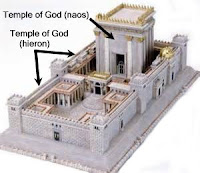Recently I've been reading through the book Misquoting Jesus by Bart D. Ehrman. For the most part, it's an interesting read. Not that I agree with it—I don't. But from the standpoint of textual criticism, I wanted to see what arguments he uses against the Scriptures so that I can better defend the Christian faith against those who don't believe the Bible is the inspired Word of God.
One of the things that caught my attention early on as I read through the book was that ironically, Ehrman is guilty of Misquoting Jesus on 1 Corinthians 15:3-4! I kind of couldn't believe it because it was such an obvious misquotation, but there it was, plain as day. Here's the full quote:
"It is not clear how much Paul used scripture (i.e., the writings of the Jewish Bible) in trying to persuade his potential converts of the truth of his message; but in one of his key summaries of his preaching he indicates that what he preached was that 'Christ died, in accordance with the scriptures . . . and that he was raised, in accordance with the scriptures' (I Cor. 15:3-4). Evidently Paul correlated the events of Christ's death and resurrection with his interpretation of key passages of the Jewish Bible, which he, as a highly educated Jew, obviously could read for himself, and which he interpreted for his hearers in an often successful attempt to convert them."[1]
Yes, the apostle Paul could obviously read for himself. And so can I, thank God. And when I read 1 Corinthians 15:3-4 in God's Word it doesn't read the way Ehrman has misquoted it. Now I'm not saying it's a misquote because of the ellipsis, no problem there really. But check out what Ehrman blatantly removed from the text. Paul doesn't merely say "Christ died, in accordance with the scriptures" but rather, "Christ died for our sins according to the Scriptures" (1 Cor. 15:3). And similarly, Paul doesn't merely say "that he was raised, in accordance with the scriptures" but rather, "that He was raised on the third day according to the Scriptures" (1 Cor. 15:4).
Insignificant, you might think. Really?
Who else misquoted the Scriptures? The devil![2]
In contrast to Bart Ehrman, notice how Irenaeus quoted 1 Corinthians 15:3-4. In his book Against Heresies, Irenaeus quotes the passage accurately: "He [Christ] was likewise preached by Paul: 'For I delivered,' he says, 'unto you first of all, that Christ died for our sins, according to the Scriptures; and that He was buried, and rose again the third day, according to the Scriptures.'"[3]
Addendum:
How is Bart Ehrman "Misquoting Jesus on 1 Corinthians 15:3-4" if the apostle Paul is the one who wrote it? The answer is because Paul says he received his gospel (1 Cor. 15:3ff) directly from Jesus! (See Galatians 1:11-12.)
ENDNOTES:
[1] Bart Ehrman, Misquoting Jesus (New York: HarperCollins, 2005), p. 21, ellipsis his. Note: This is the hardcover edition without the appendix.
[2] In Luke 4:9-11, the devil misquoted Psalm 91:11-12.
[3] Irenaeus, Against Heresies, Book III. See The Ante-Nicene Fathers.














